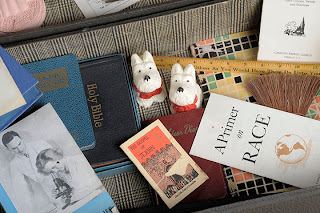
I wrote way back in 2011 about the photographer Vivian Maier.
To refresh your memory, In 2007 26-year-old real estate agent John Maloof walked into an auction house and bid on a box of 30,000 prints and negatives from an unknown photographer. Realizing the street photographs of Chicago and New York were of unusually high quality he purchased another lot of the photographer’s work totaling some 100,000 negatives, thousands of prints, 700 rolls of undeveloped color film, home movies, audio tape interviews, and original cameras.
Over time it became clear the photos belonged to a Chicago nanny who had photographed prolifically for nearly 40 years, but who never shared her work during her lifetime. Since the discovery Maier’s photographs have received international attention with collections touring in cities around the world as well as the publication of a book. Finally, a show of Maier's work has come to Seattle, open now at the Photo Center NW, and running through the end of March. See it!
Additionally, a documentary called Finding Vivian Maier is nearing completion and looks to be a fascinating film. Can't wait.














